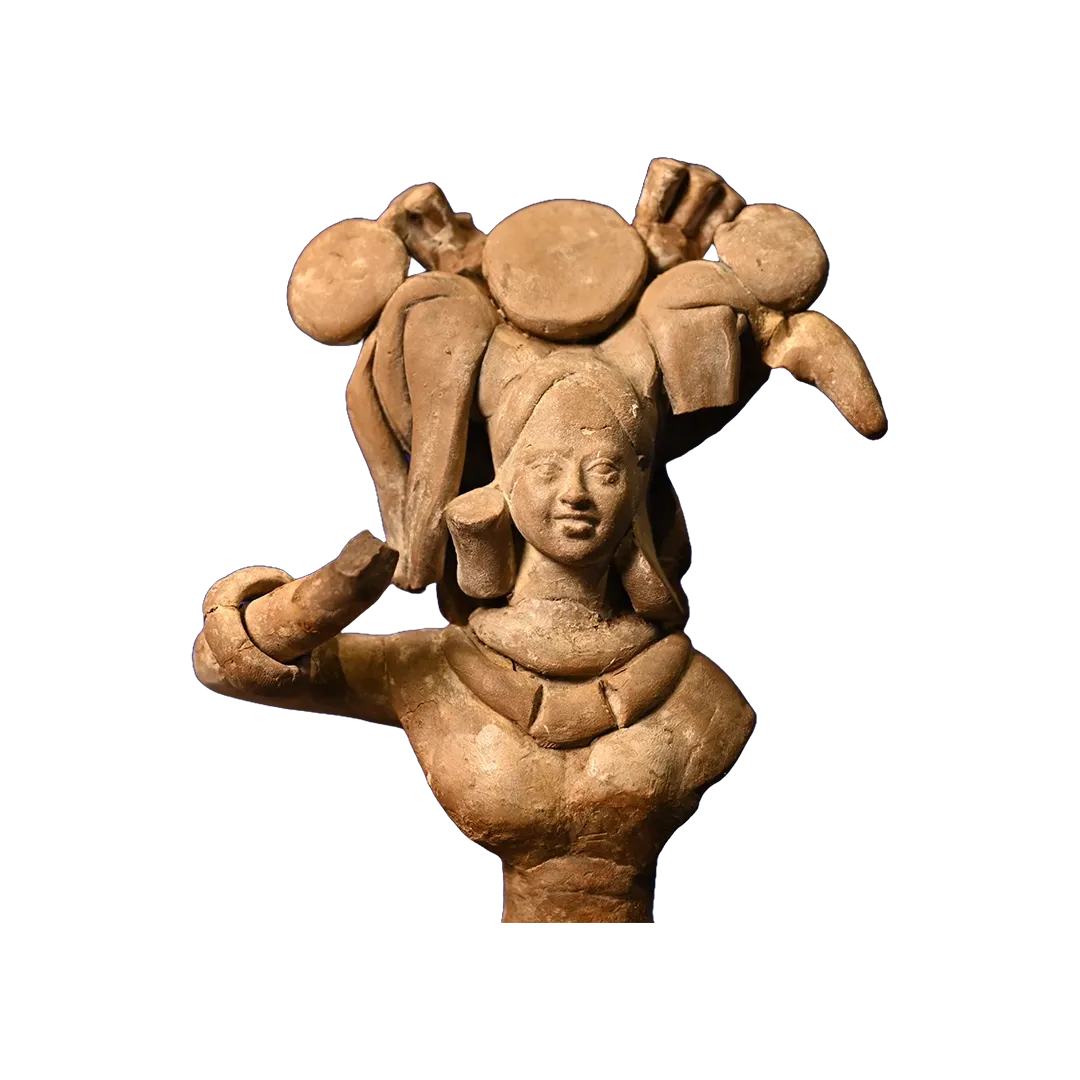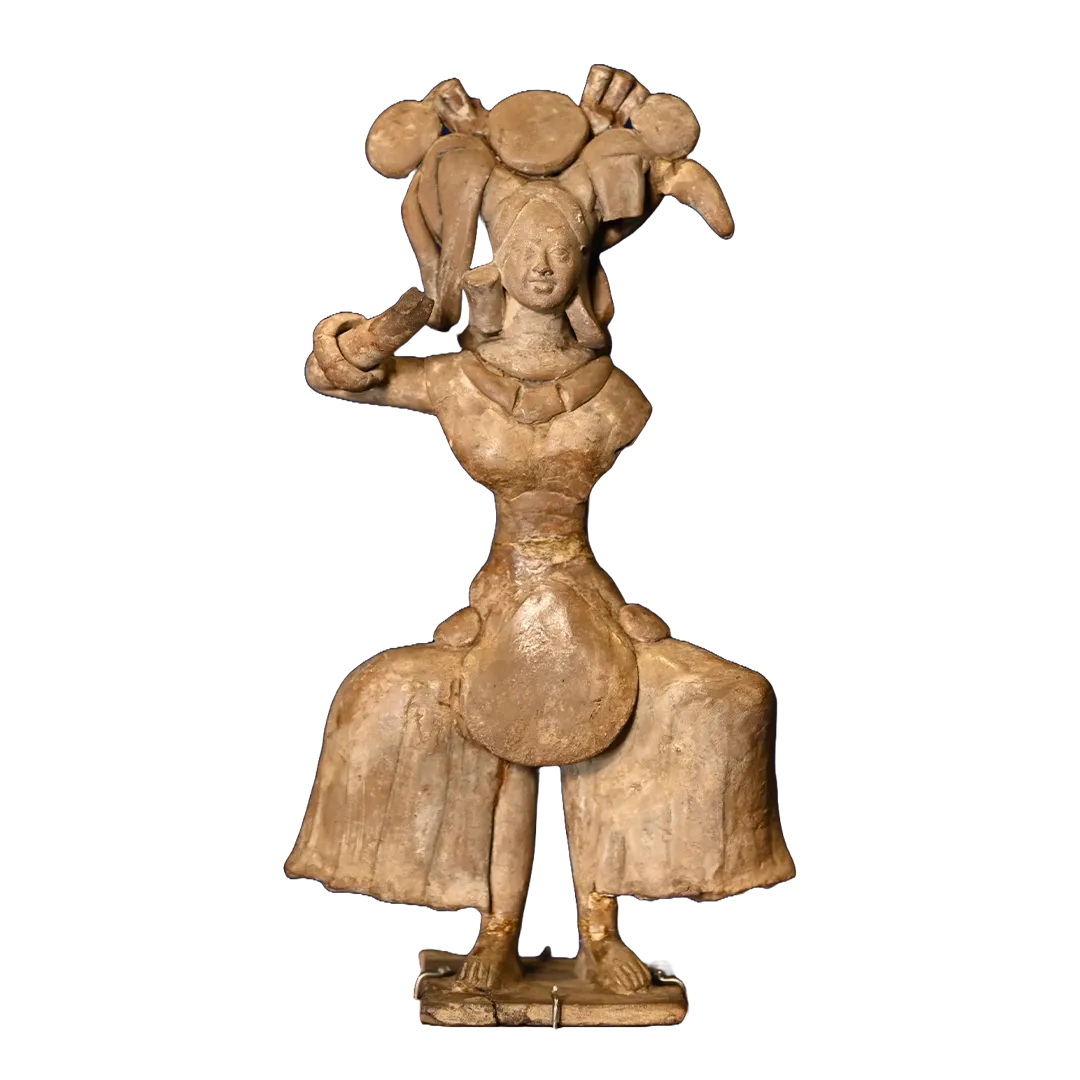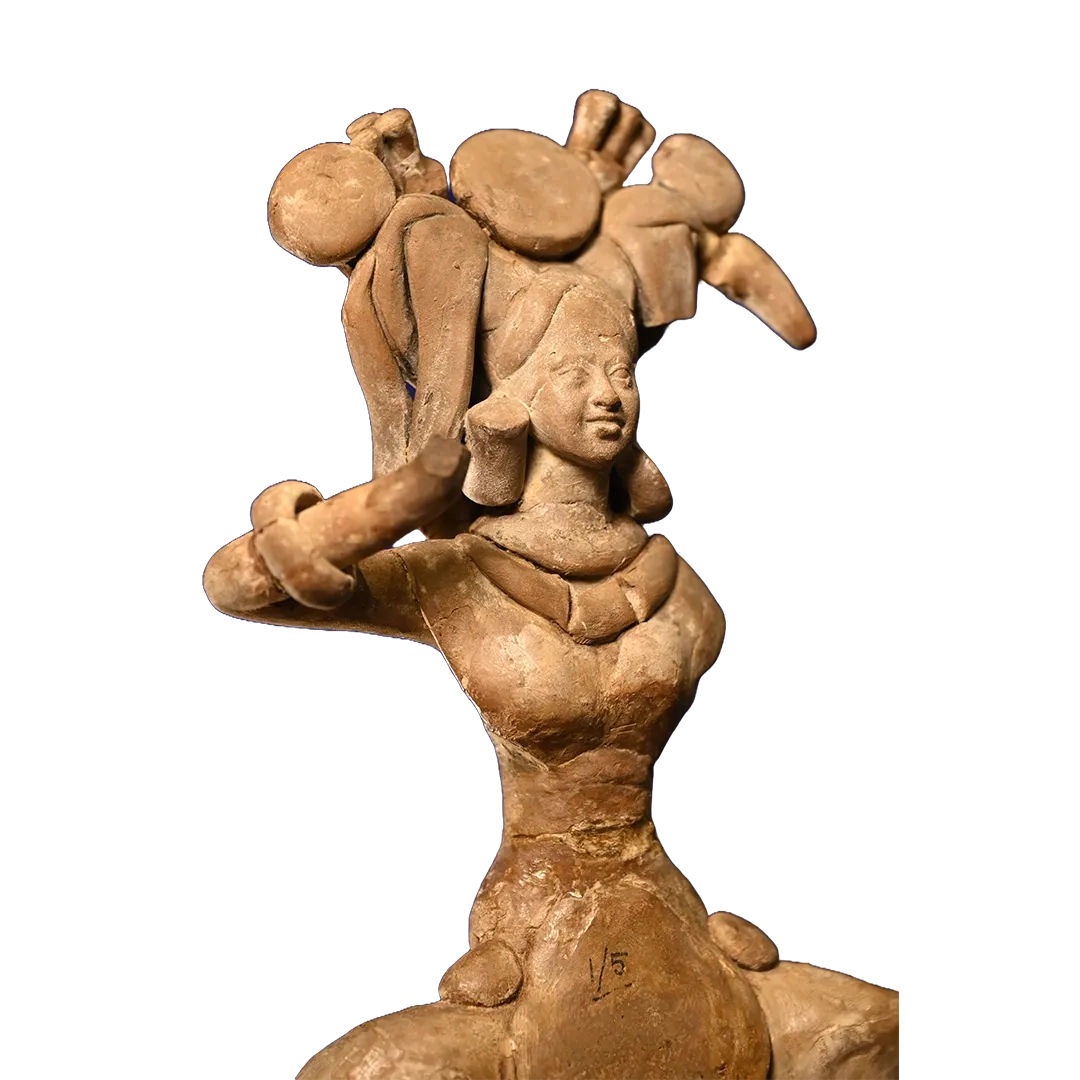



These two sculptures of The Dancing Girl tell us a lot about the close ties that existed between India and the Greeks during the Mauryan rule. We can see that artistically there was a lot of give and take between the two cultures - the Hellenistic features of the sculpture- the defined movement of the dancer in motion, draw deeply from the aesthetic expression of Greece. The sculptor shows the dancer’s movement through the flurry of her skirt floating around her, in one hand the damru or two-headed drum held above her head in a play of rhythm and motion, her other hand by her waist as she keeps to the beat of the music. The first sculpture shows an intricate headdress, which is another borrowing from the Greeks who popularized the elaborate hair-do’s and decorations. The way the drapes fall against the form of both the dancing girls, close to the body but in a sideward motion speak of the skill of the craftsmen who were able to render realistically the experience of nritya, or dance and shringaar or embellishment through their work in terracotta or clay. The exquisite expression of pleasure and animation on the features of the figurines, the graceful movement of their hands skillful and precise is the depiction of the Rasas – capable of arousing the essence of emotions.